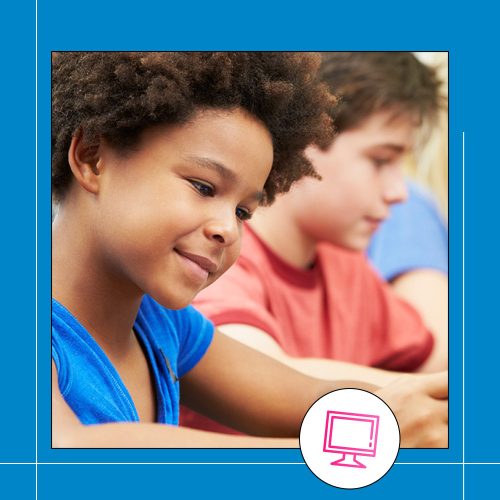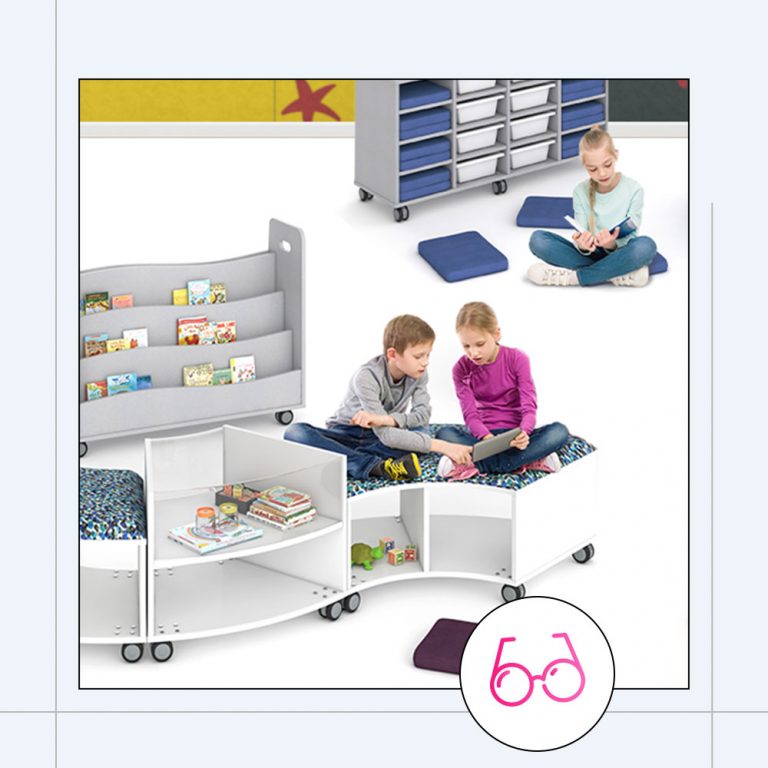Learning spaces are no longer defined by four walls, a desk and chair for every student and a whiteboard.
Let’s face it; we now live in a fast-paced digital world. No longer is the photocopier the biggest thing in education since sliced bread. From advances in Augmented Reality, Smartboards and Information Technology, we have come such a long way in education just in the last ten years.
Whether you call it 21st-century learning, new generational learning, flexible learning, flipped learning or Future Focused Learning, the undeniable truth is that technology is a key component of the future of education.
Technology in the classroom has brought new ways for sharing information, communicating and discovering the world. It’s not just teenagers, young adults and kids who love using it. Teachers love using technology too.
An infographic by Open Colleges on the ‘Components of a 21st Century Classroom’ highlights the top three reasons why teachers incorporate technology in the classroom.
The Top 3 Reasons Teacher’s Use Technology in the Classroom:
- 76% To Adapt to Diverse Learning Styles
- 77% To Boost Student Motivation
- 76% To Enhance the Material
While there are benefits of using technology in the classroom, there is also a quite a lot of debate about how technology can be detrimental to student learning and may even cause more harm than good.
It seems for as many positive effects; there are just as many negative effects of technology in the classroom.
Let’s look at the pros and cons.
Just to be different, let’s flip this upside down and start with the cons first.

The Cons
Technology Can Be A Distraction
The biggest negative we keep hearing is that technology can distract students from the task at hand. Smartphones, laptops and iPads and the internet allow for endless access to videos, games, notifications, text messages and pop-ups. With so many virtual distractions there is no wonder students eyes (and their focus) wander to their devices.
Solution: rather than ban technology and electronic devices completely. To minimise digital distractions and inappropriate device use, create set rules or expectations for technology time and monitoring student’s use.
You Could Include Rules such as:
- Devices are to be on silent or aeroplane mode before the start of class
- Devices are to be put away during teacher instruction
- Laptops or iPads are only used for notetaking or in-class activities
Alternatively, there are plenty of different Mobile Device Management programs that can be used to monitor and control device usage. Some even have features that black-out screens to get student’s attention or approve usage of certain apps.
Technology Can Disconnect Students from Social Interactions
I’m sure you’ve heard the iconic phrase ‘Kids these days are glued to their phones’.
It’s a debate that we’ve all heard before. Is technology ruining our social skills or improving the way we connect with each other?
The debate raises concerns about how excessive technology consumption hinders children’s social development including their ability to handle face-to-face conflict-resolution and identify social cues. Social media is also heralded as a platform for cyberbullying and can lead to feelings of depression, isolation, low-self esteem and envy.
On the other side of the debate, people argue technology enables opportunities for social learning, sharing information and allows the more shy or introverted students to blossom and have their voice heard. It can strengthen our relationships with our friends and family members that we might not always see and allow us to connect on a whole other level.
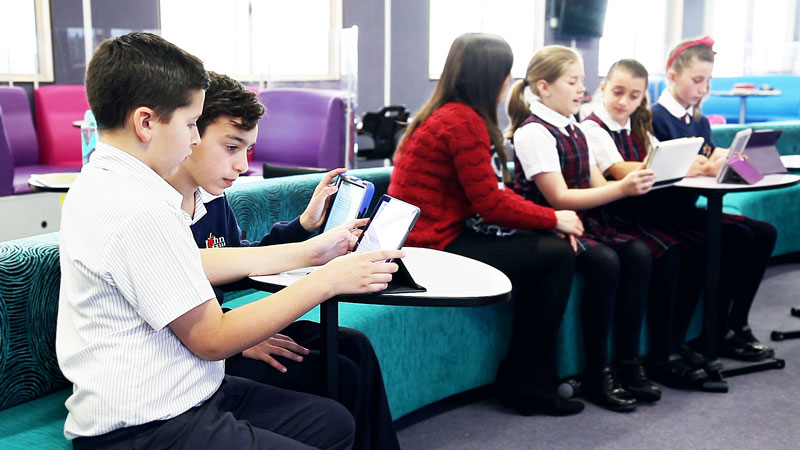
Not all Students have Equal Access to Technology
The two biggest barriers to integrating technology in the classroom are cost and accessibility.
It’s important to address that not all students come from families with large disposable incomes for purchasing the latest smartphone, laptop or iPad for educational use.
Another issue is that schools in rural areas that receive little funding for newer facilities, school furniture or resources may not be able to provide students with comprehensive access to online educational resources.
3 Quick Solutions:
- Encourage students to work in groups and share digital resources if limited
- Encourage students to visit the school or public libraries to access their resources
- Play educational games or complete learning modules in class as a whole class
Food for Thought: Technology makes distance learning more accessible than ever. Children living in rural areas can access the same information as children living in metropolitan areas thanks to the internet. There are also tones of platforms that support Blended Learning Management Systems (LMS), Flipped Learning, Blended Learning E-Learning and specialised Online Courses. They also offer a richer learning experience because students can customise their learning and go at their own pace.
Technology Can Make Students Lazy
When you have a whole world of convenience at the touch of a screen, button or few keys on your keyboard, it’s easy to become dependent on technology.
How easy is it to just run spell-check on a document?
Google the answer to a question?
Copy and paste information?
Whip out your mobile’s calculator?
Students are becoming more reliant on technology to do simple tasks like basic spell-checking, grammar, punctuation or times tables.
Historically, students have always found ways to cheat. The digital age makes it even easier to cheat. From writing formulas and answers to a test into a notes app on your mobile phone to copying-and-pasting information for an assignment, or even downloading a whole essay on Romeo & Juliet straight from the internet.
Solution: There are preventative measures that can be put in place to minimise cheating and plagiarism such as collecting mobile devices before testing or uploading assignments into programs like Turnitin that detect plagiarism.
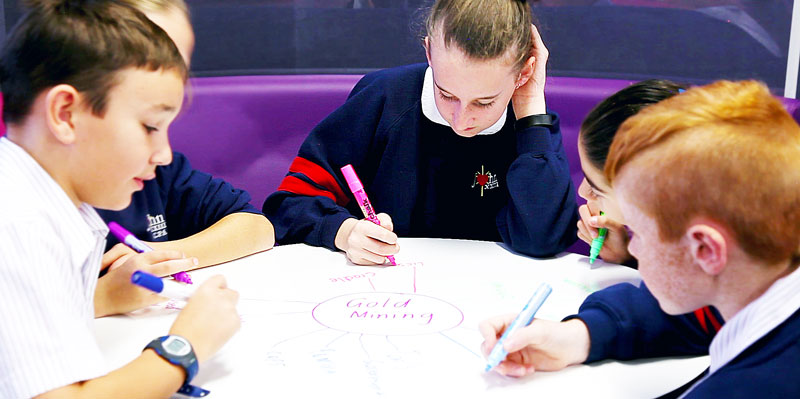
The Pros
Technology Improves Student’s Test Scores & Helps Them Study More Efficiently
3 Quick Stats
A study by Houghton Mifflin Harcourt in California revealed that students who used iPads for study saw an increase in their math test scores by 20% in one year compared to students using traditional textbooks. Source:
According to Open Colleges, 81% of U.S teachers think tablets can enrich classroom learning, and 86% of students believe that tablets can help them to study more efficiently. Source: Open Colleges
It’s not just school students. A Pearson Foundation’s survey found 66% of college students and 64% of high school students agreed that tablets helped them study more efficiently. Source: Pearson Foundation
Access to Endless Online Educational Resources
More and more teachers are integrating educational apps, games and videos into their lessons plans to enhance the material they teach.
There are Apps and Games for:
- Classroom management
- Grading
- Maths
- Spelling
- Quizzes
- Reading
- Note Taking
- Video Viewing
- Coding
- Chemistry
Students love games and can sit for hours working through difficult concepts that are presented in a fun and challenging way. Some of the more popular online resources include Ted ED, Google Classroom, Class Dojo, Kahoot and Evernote. Want to see them all? Make sure you Check out the Top 20 Must-Have Apps for the Classroom in 2018.
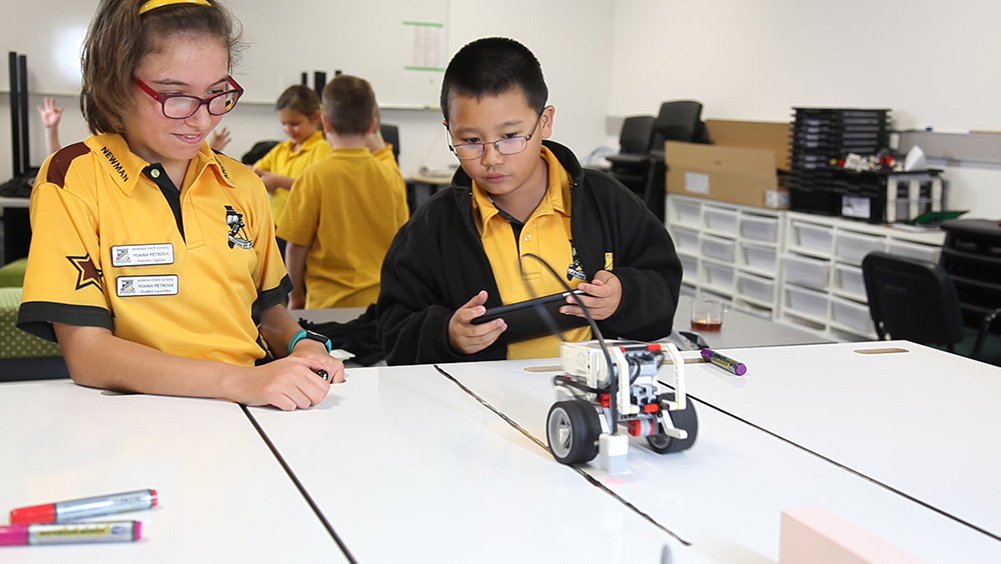
Technology Encourages Collaboration
Sharing digital resources like iPads creates opportunities for students to work in groups and collaborate on projects in a more interactive and connected way.
Online tools and apps offer a unique setting for students to work together on a group project. They can work from home connected to the internet, share videos and interesting topics and edit the same document in real time.
Often games incorporate elements like levelling up, earning points or badges and achievements that push students up a leaderboard that adds a little friendly competition. It also motivates students to do their best work because some games recognise and reward student’s accomplishments.
Teachers can also track their student’s progress and understanding.
Using Technology in the Classroom Creates a Tech-Savvy Generation
We live in a digital world, and tech literacy is an increasingly valuable life skill that employers want their employees to have. Students are already learning the future skills they need to succeed in a tech-heavy world in the classroom. Skills like basic coding, programming and word processing, video editing, information processing and statistical analysis.
Employers look for two things:
- Candidates who show an eagerness to pick up new skills.
- Candidates who have a proven ability to learn new skills like new technologies and can quickly put their training into action.
You’re never too old to learn new skills or technologies. But instilling eagerness and encouraging students to learn new technologies at an early age ensures that a whole generation enters the workforce prepared.

Bonus Pro
Technology puts students more in touch with their learning and the world around them.
They’re not just connected to the concepts they are learning; they’re also more connected and aware of their classroom environment. The flexibility and convenience of using hand-held devices means that students aren’t confined to their desks. They can move around, occupy soft seating areas full of ottomans or bean bags or sit on the floor.
They can even design their own classroom layout.
It seems crazy, right?
There are already hundreds of teachers and students embracing 3D software like the BFX 3D Room Planner that allow them to design their classroom in 3D.
The best part? It’s ridiculously fast and easy. You don’t need to be a tech-genius.
See for yourself!


